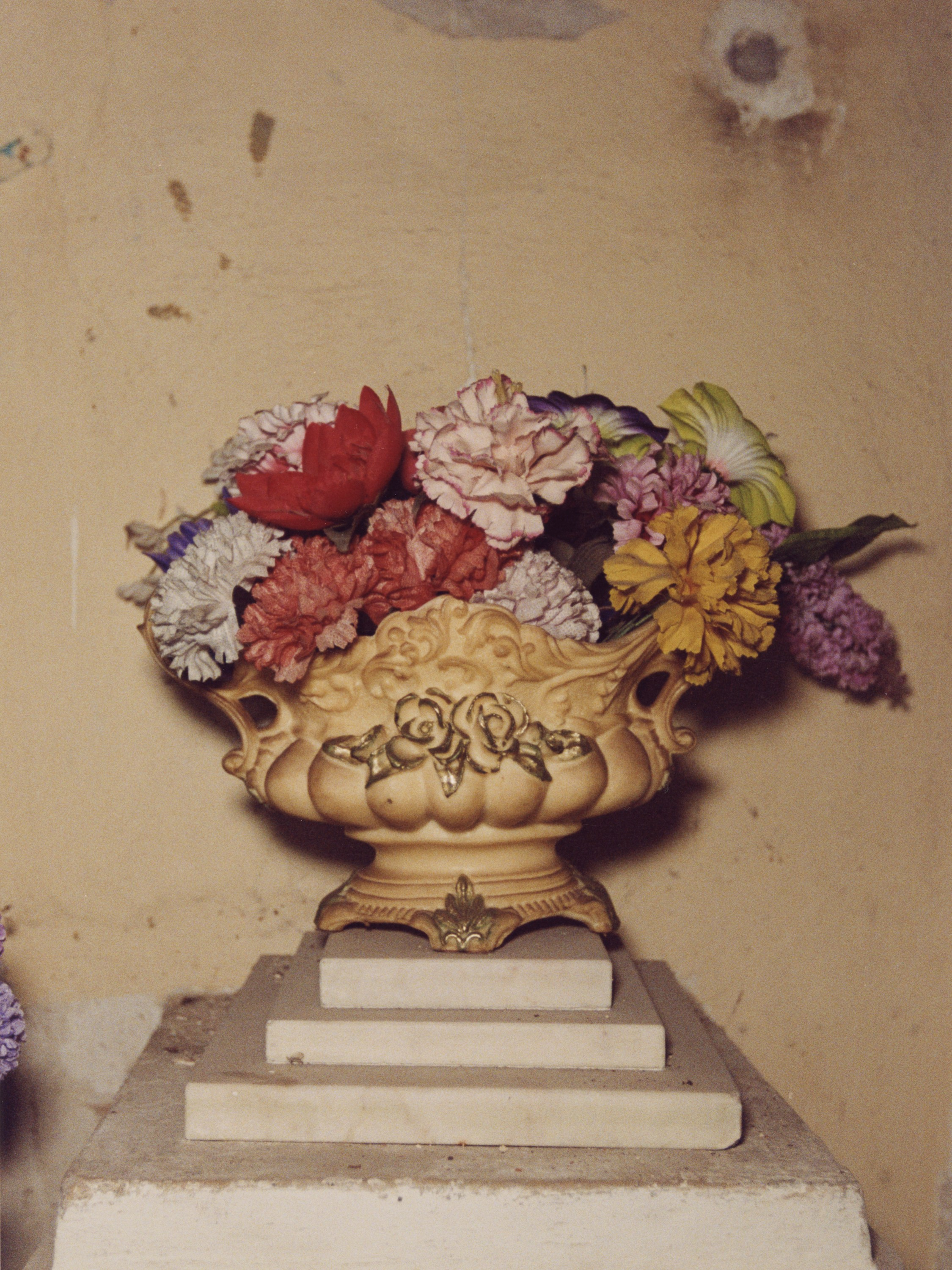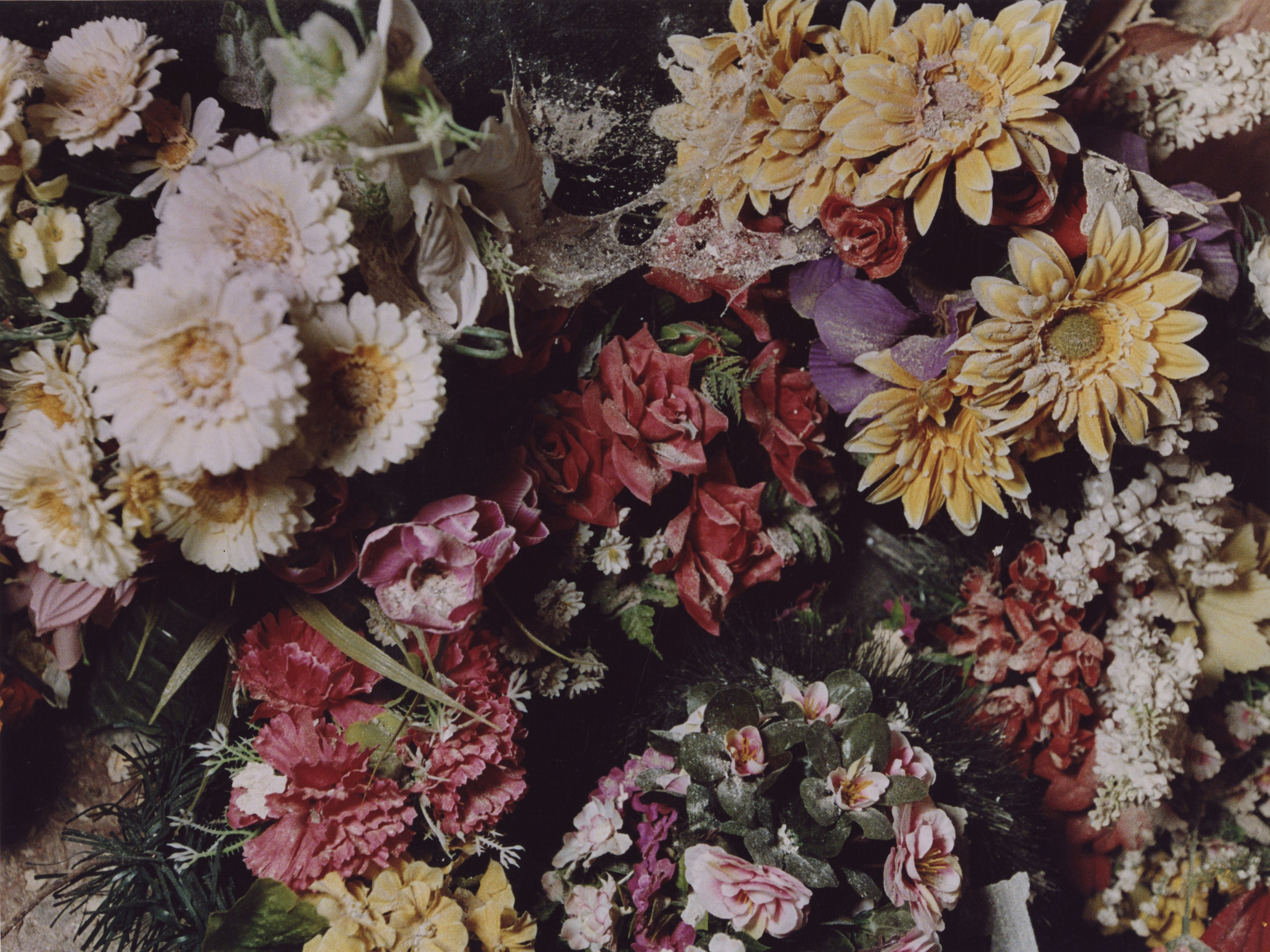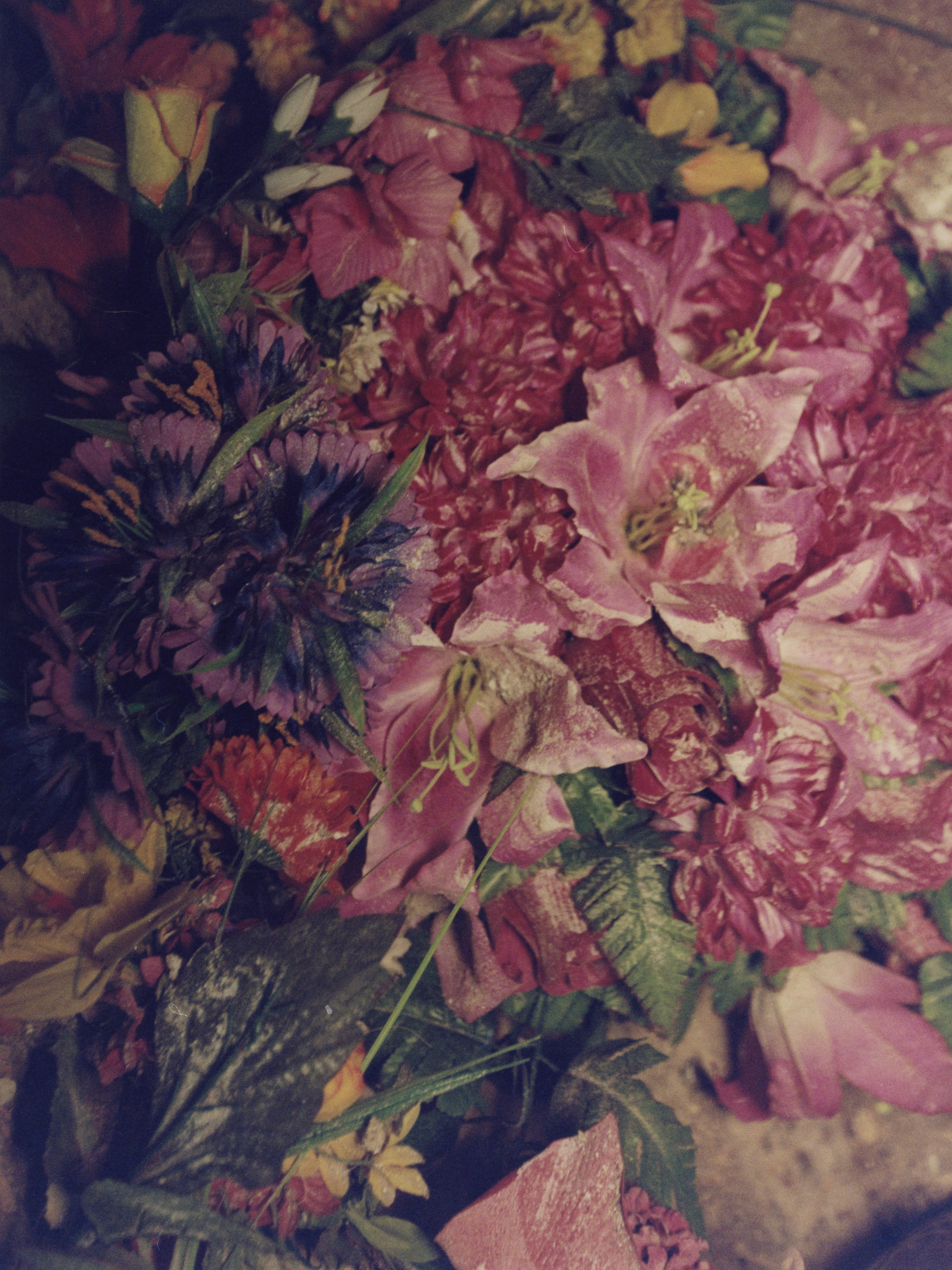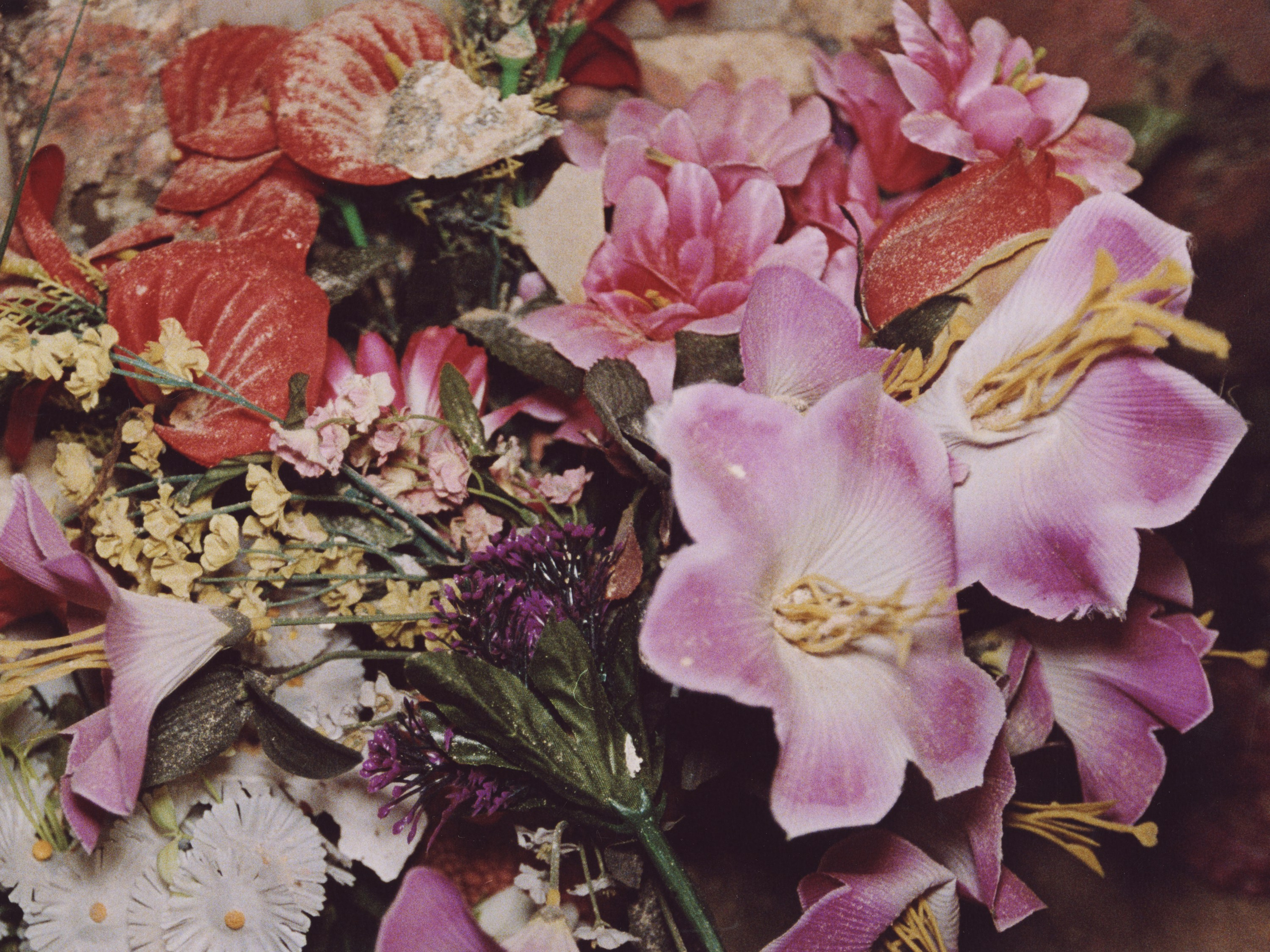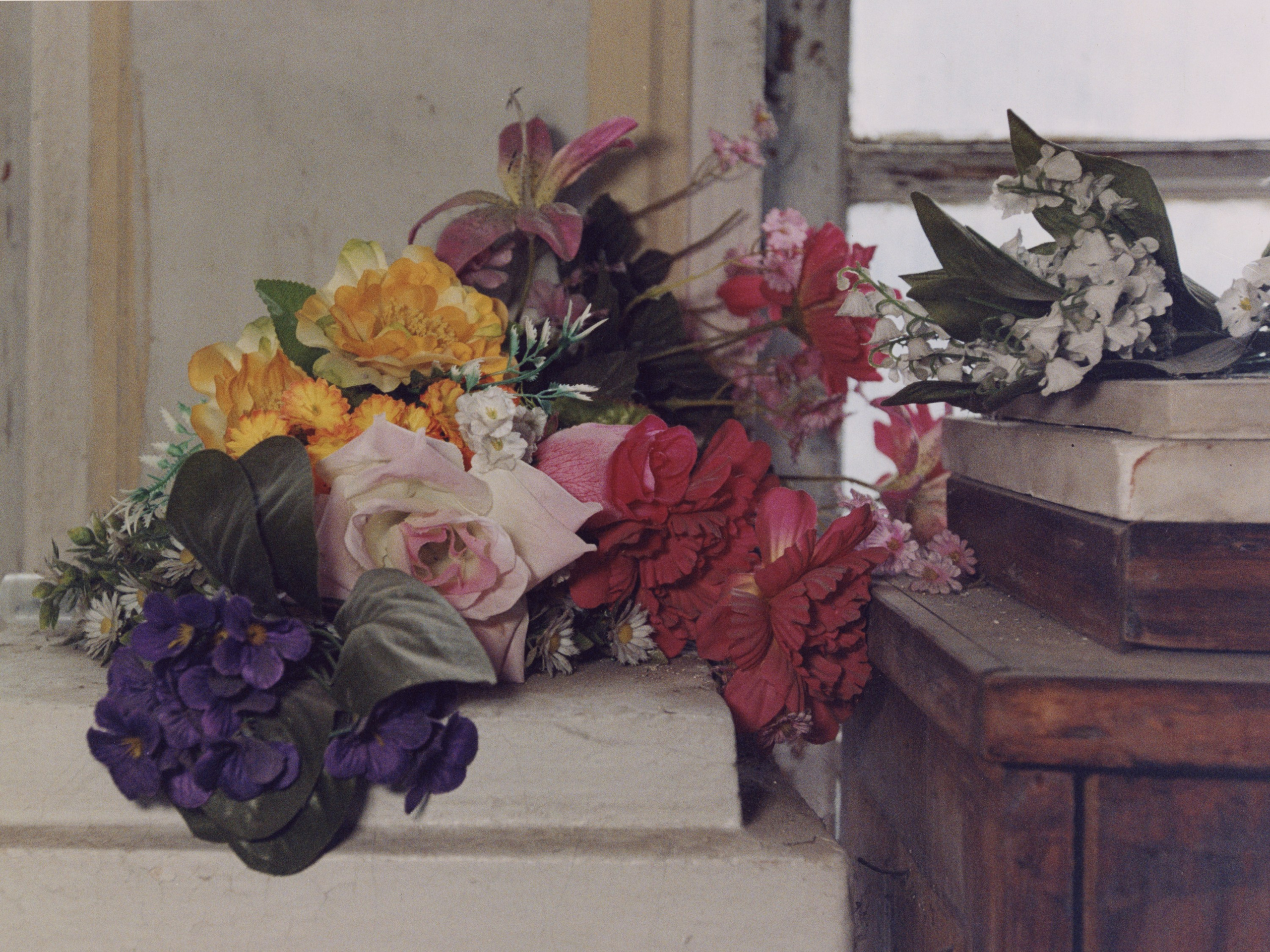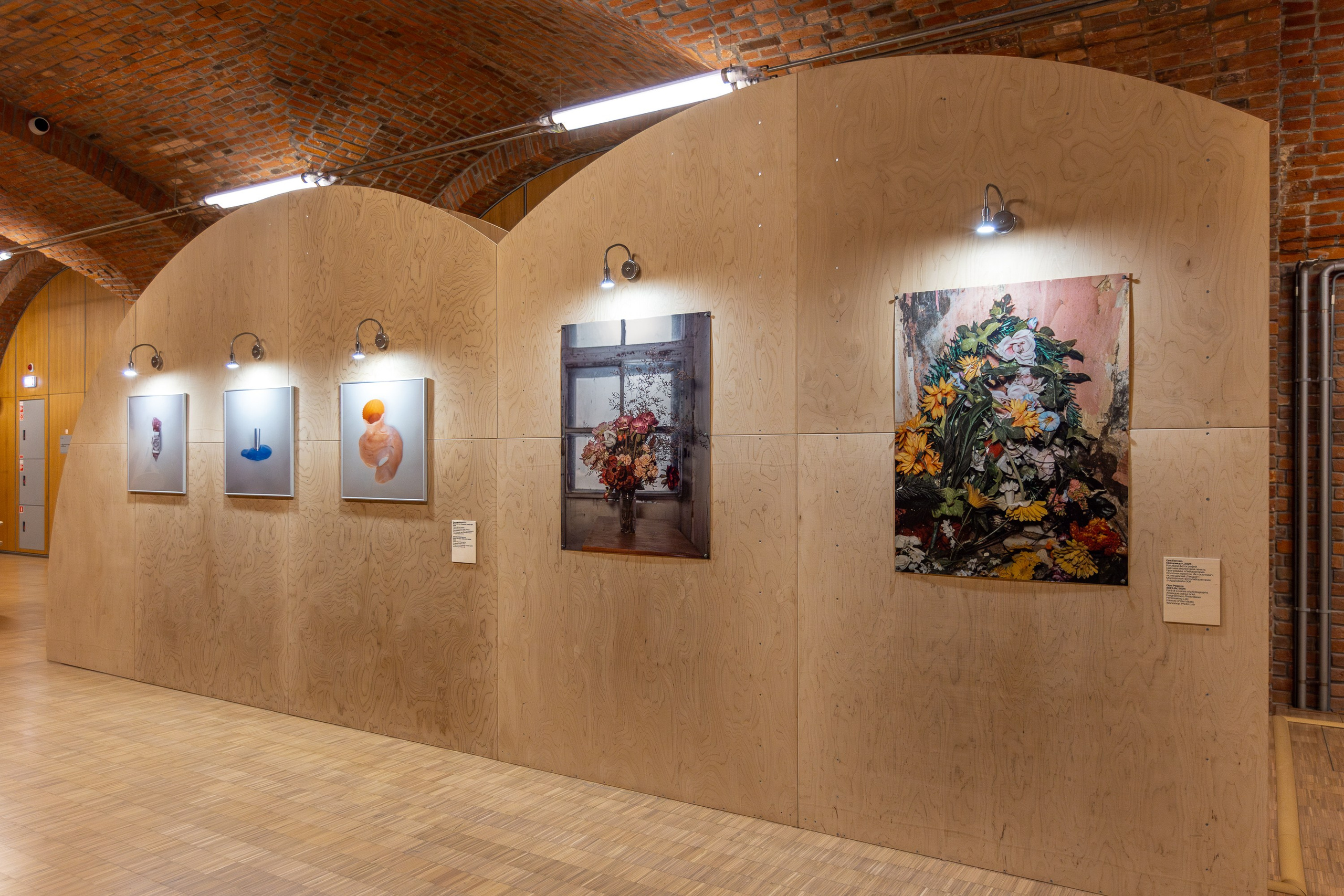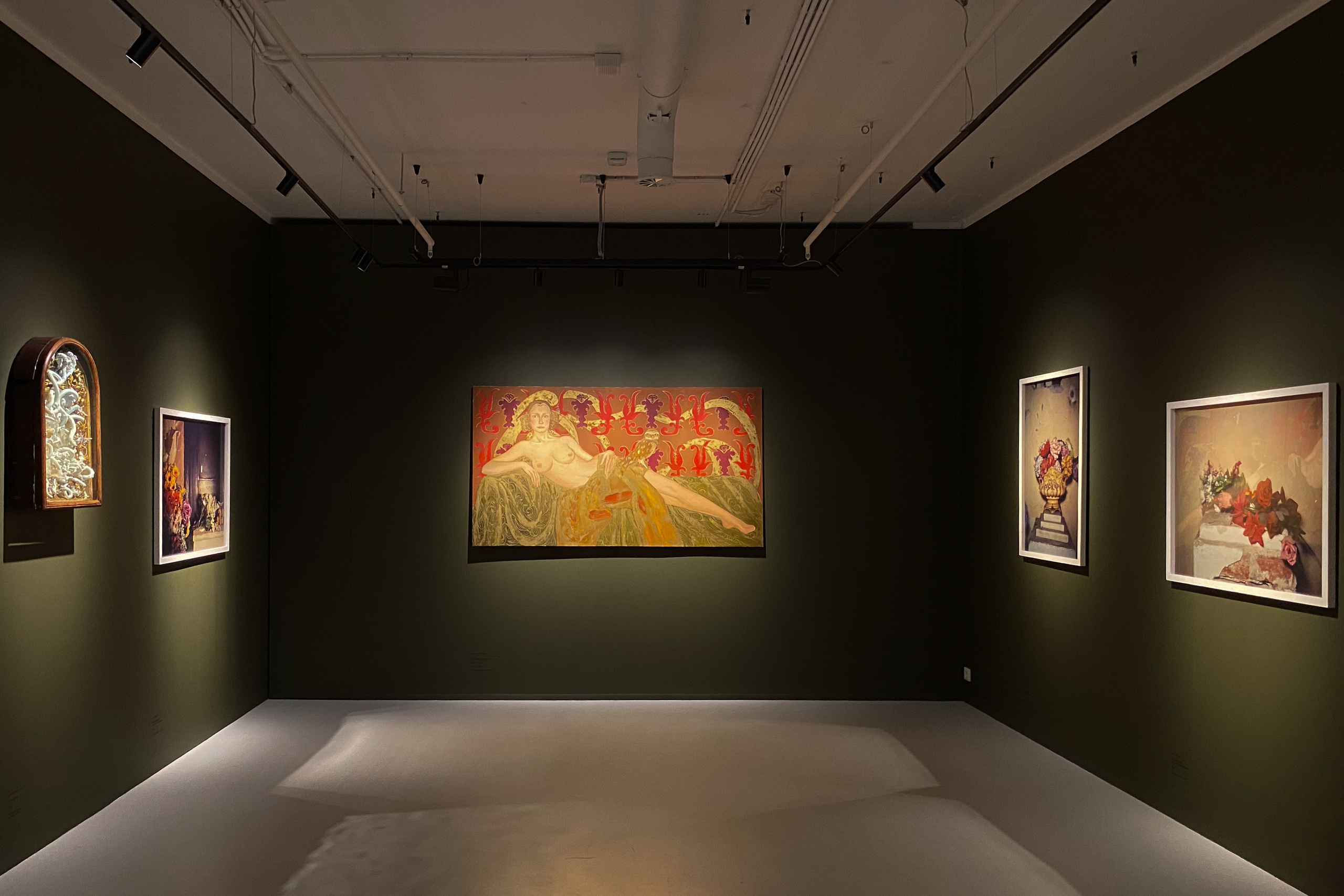STILL LIFE
(2023 — in progress)
SERIES OF ANALOG PHOTOGRAPHS
In 1927, the Church of Saint Seraphim of Sarov was converted into the first Soviet crematorium and columbarium. This architectural transformation became, for me, a key to understanding a new state politics of death, one that severed ties with religious traditions and turned the body into an object of regulation. The funeral ritual was reimagined as a “technology of forgetting”, standardized, depersonalized, and replacing death with a form of production.
In this project, I paid special attention to artificial flowers, markers of abandonment and perfunctory ritual. They became a point of entry into reflections on the boundaries between personal and collective memory, and on memories that were never allowed to fully form.
The series of 35mm analog Still Lifes is a documentary record of loss, an act of appropriating someone else’s memory. All prints are handmade. The archival texture of the prints restores the materiality of loss, allowing memory to remain imperfect.
The printing process itself becomes a bodily intervention in history, a gesture of resistance to forgetting. As the image passes through the hands, personal memory gains form and becomes a foundation for a new, undisciplined collectivity. All the works were scanned from hand-printed analog photographs, the process itself is an inseparable part of the statement.




